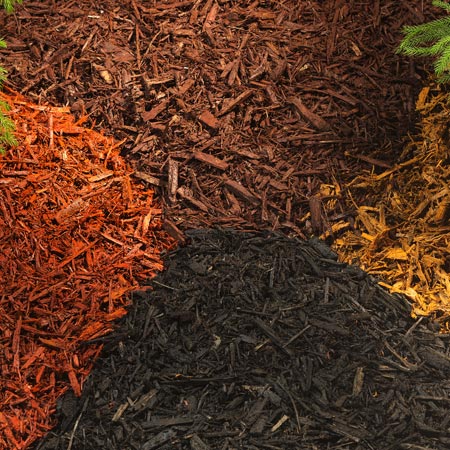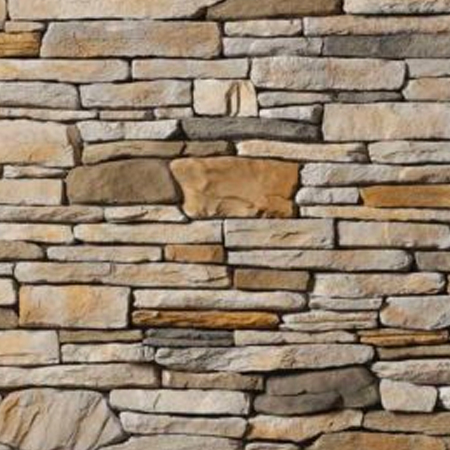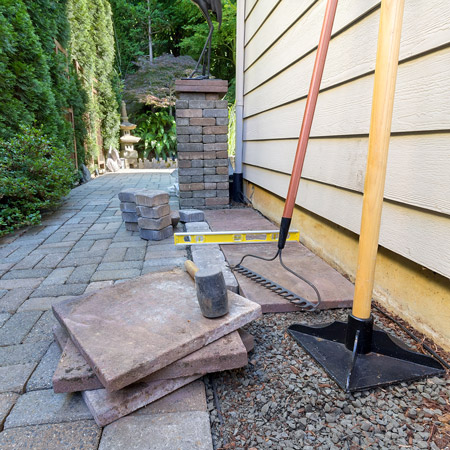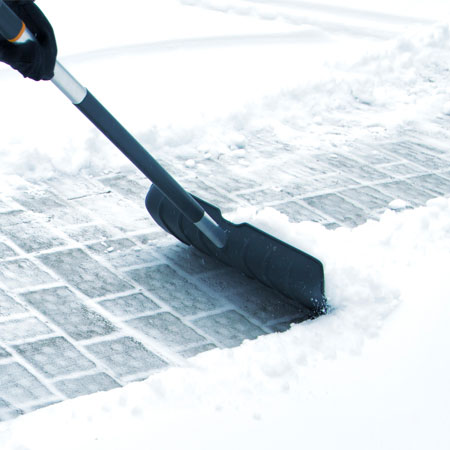
The method for this type of construction was brought to the region by colonists that came from Europe and it is an art form that is known as “dry walling.” Not to be confused with drywall, which is used in building construction, “dry walling” refers to the building of a dry stack retaining wall without the use of mortar or other adhesives to provided added structure and stability to the finished product. The way that the stones are laid and the prevention of water from accumulating on the interior of the structure is what helps it to retain its integrity in a region where severe freeze-thaw cycles are a way of life.
Retaining Wall Ideas for Homeowners
Because of the rich history in dry stack retaining wall building throughout the New England area, it only makes sense that many homeowners in Seekonk or elsewhere in Southeastern Massachusetts, Rhode Island and the surrounding region are interested in learning how to build a retaining wall made of dry stack materials. Creating a true dry stack retaining wall out of stone the way that the colonists did is an art form, which can be costly to commission. However, there are many modern materials available that can help even the most inexperienced homeowner build a viable, strong and sturdy dry stack retaining wall.
Step One – What Type of Materials Will You Use?
The type of materials that you choose to use in creating your backyard wall ideas will determine the height, strength and abilities of your new dry stack retaining wall. Natural stone materials that are rounded and more curved will be difficult to stack properly, while flat natural materials and manufactured materials that are designed for this purpose will make it easier to stack without having to make too many adjustments.
TIP – Pavers from Nantucket pavers, Belgard and Pavestone can make excellent choices for creating a beautiful dry stack retaining wall that will match and coordinate with your paver patio and other hardscaping projects.
Step Two – How Much Material Will You Need?
Before you can implement your retaining wall ideas, you will need to gather your supplies. To figure out how much materials you will need and to figure out how to build a retaining wall for your specific property needs, multiply the height of the wall that you want to build times the length of the wall. For example, a two-foot high wall that is 20 feet long will need 60 linear feet of materials.
TIP – Natural stone and manufactured paver materials for creating a dry stack retaining wall can be very heavy and difficult to move. Speak with a sales rep at J&J Materials to find out about our delivery service. Our current delivery area covers all of Southeastern Massachusetts and Rhode Island.
Step Three – Gather Your Tools
Every job requires tools and when learning how to build a retaining wall and implementing your native New England retaining wall ideas, you will definitely need some tools. Some of the tools that you will require include:
- a shovel
- a level
- a mallet
- stakes and string
- a line level
Step Four – Begin Preparing the Area
Before you start digging, make sure to contact the local utilities companies and have them come out to mark off any cables, lines or pipes to make sure you don’t accidentally do any damage. When you are ready to start digging, your best bet is to dig into the slope against the space where the wall will be located. Earth that is undisturbed will be more stable than fill dirt, so try to do it as close to where you want the wall to be built as possible. If you are building a freestanding dry stack retaining wall for a garden or other landscaping area, you can dig and build where you want, taking care to backfill the area with dirt as you go higher and higher with your backyard wall ideas.
TIP – The base of your trench should be about four inches deep and a minimum of two feet wide. Even if the stone materials you are using are not two feet deep, the base should be this wide to provide stability. You can fill the area in front of the trench with decorative stone materials below the surface and then cover with landscaping fabric and fill dirt if you want, just make sure that there is a stable base before you move forward with your project.
Step Five – Begin Laying the Stone Materials
The first layer should be flat on both sides and, if your stones are irregularly shaped, should be the largest stones in your pile. The largest, thickest stones should go at the bottom. If you are using uniformly shaped and sized manufactured or cut products, just start building, creating the first complete layer before starting on additional layers. Stagger the stones or blocks, placing the next layer at the middle of the seam between the stones on the first layer. Again, repeat the entire second layer before beginning another.
TIP – Once you create the first full layer above ground, begin to fill or backfill the area with dirt. Tamp the dirt in to lock the rocks into place without leaving any gaps. Then create another layer or two before stopping to fill in the area with dirt again to ensure that there aren’t any gaps remaining.
Step Six – Add the Capstone
The “capstone” layer is the top layer of rock, stone or other dry stack retaining wall building materials that will “cap off” the project. Some homeowners like to use a special material for the cap layer to create a unique look or feel, while others just continue using the same materials they used to build the wall for the final layer. It all depends on your own backyard wall ideas and the method you use how to build a retaining wall.
TIP – The ideal height for a dry stack retaining wall is somewhere between 18-22 inches. The purpose of this is to create a wall that can be sat on when doing gardening, especially of the retaining wall ideas include a gardening or landscaping area. Even if sitting on the wall is not something you will be doing, you shouldn’t go any higher than three feet for a dry stack retaining wall.
Where to Get Materials for a Dry Stack Retaining Wall in Seekonk
Whether you want to turn your backyard wall ideas into a weekend project or you want to learn how to build a retaining wall in order to shore up a slope on your property, J&J Materials is the place to go for all of your dry stack retaining wall and other hardscaping project materials. From brand name pavers, such as Nantucket, Belgard and Pavestone, along with local and regional natural stone materials, J&J Materials has a very wide selection of materials that are well-suited for any residential or commercial landscaping or hardscaping project. Come by our local Seekonk location or visit us down at our Cape Cod store in Bourne. Don’t forget to ask about our delivery service option!






